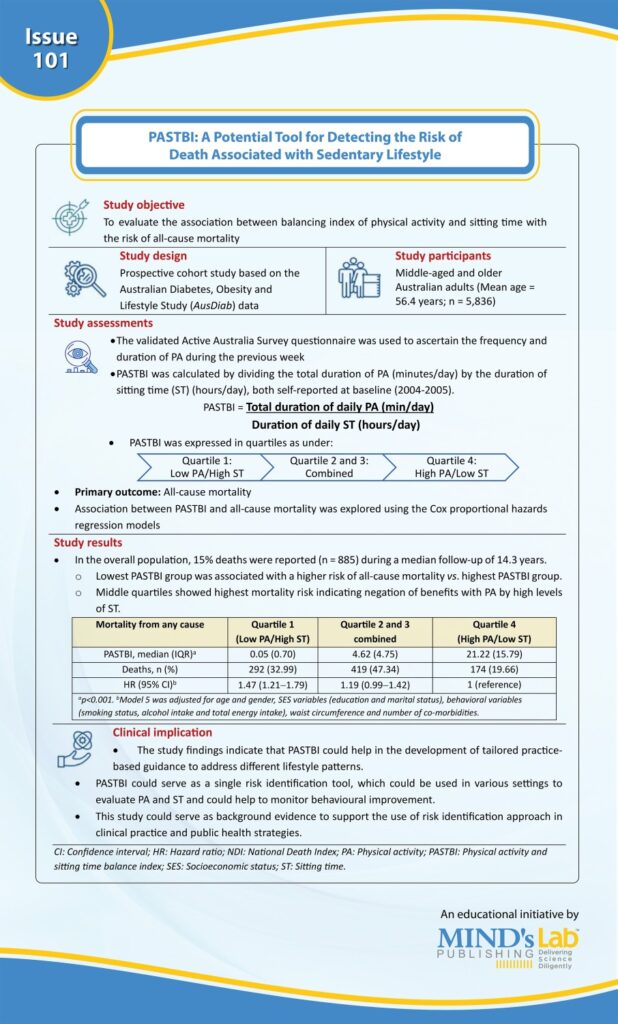
Achieving an optimum balance of more time spent in physical activity (PA) and lesser time spent in being sedentary or inactivity (sitting time [ST]) is associated with multiple health benefits, including reduction in mortality risk. In fact, the benefits of PA can be blunted by increased ST, underscoring the need for balancing PA against ST.
In order to equip healthcare professionals with a risk identification tool that integrates both PA and ST, the physical activity and siting time balance index (PASTBI) was developed and evaluated in a study by Botlero, et al., on the risk of all-cause mortality in middle-aged and older Australian adults. The results were published recently in the American Journal of Preventive Medicine (see Graphic). The key findings were:
. The benefits of PA can be negated by high levels of ST observed in groups with equivalent levels of PA/ST.
. The proportion of deaths was inversely proportional to the PASTBI: Higher in low PASTBI group and lower with higher PASTBI index.

(Source: Botlero R, Sethi P, Gasevic D, Owen N, Barr E, Dunstan DW. A physical activity and sitting time balance index and all-cause mortality risk. Am J Prev Med. 2024. Doi:10.1016/j.amepre.2024.07.015)
